| ||||||||||||||||||
| ||||||||||||||||||
One of the many benefits of living in San Diego is that you get to watch rockets launched from Vandenberg Air Force Base in Central California.
If you live anywhere in the southwestern USA, but especially Southern California, you too can see these launches. All you need to know is available at Brian Webb's Space Archive.
A Delta 2 rocket launched Italy's COSMO-SkyMed satellite on June 7, 2007. The launch was a little before sunset and looking straight into the sun for me, so I did not see any evidence of the launch until half an hour later, when the sun had set and the sky was dark enough to allow the subtle twilight effect on the rocket exhaust plume to become visible. These photos were taken about one hour and twenty minutes after launch, from Poway, California.
|
|
On June 27th, 2006, a Boeing Delta 4 was launched from the SLC-6 ("Slick 6") launch pad at Vandenberg Air Force Base. "Slick 6" is famous for being the launch pad from the cancelled Manned Orbiting Laboratory and west coast Space Shuttle programs. This first launch of the Delta 4 from the west coast carries a classified spy satellite for the National Reconnaissance Office, rumored to be for eavesdropping.
As the rocket rose out of the haze, it was a brilliant crimson red color that just isn't conveyed well in this photo.
|
|
|
|
As the first stage of the rocket finished its job, a beautiful exhaust plume appeared.
|
|
|
|
On September 22nd, 2005 a Minotaur rocket launched a classified satellite named 'Streak' for the Defense Department. The Minotaur is a converted Minuteman 2 ICBM, with upper stage motors from a Pegasus rocket. Click here to purchase high quality prints of these images.
Because the launch occurred after sunset, it took over a minute for the rocket to climb high enough to be in sunlight.
|
|
The gap in the trail is caused by staging, where one rocket stage shuts down and another takes over shortly afterward.
|
|
|
High altitude winds quickly go to work, twisting the exhaust trail. Ice crystals form and give us the rainbow of colors.
|
About fifteen minutes after launch, the sun has set on most of the rocket exhaust. A glowing blue cloud of material is visible at left.
|
A Delta II was launched on January 12th, 2003, to loft NASA's ICESat (Ice Cloud and Land Elevation Satellite) and CHIPSat (Cosmic Hot Interstellar Plasma Spectrometer) satellites. Below, the exhaust from the solid rocket boosters can be seen. These pictures were taken from atop Mount Woodson in San Diego.
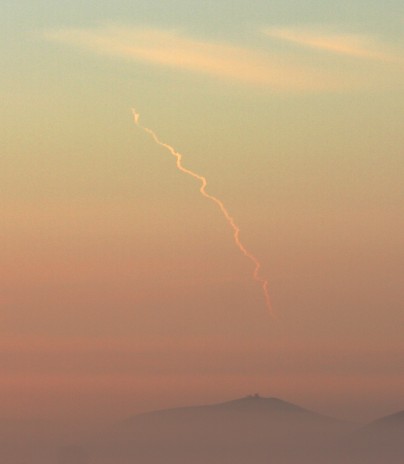
I was able to see the rocket's exhaust plume all the way until MECO (Main Engine Cut-Off), about four and a half minutes after launch. This shot was taken just seconds before MECO.
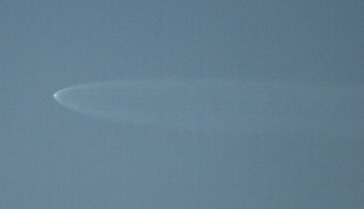
The contrail spread out over a wide expanse of the sky, blown by the winds. This launch at about 15 minutes before sunset occurred too early for the "Twilight Phenomena" to be seen.
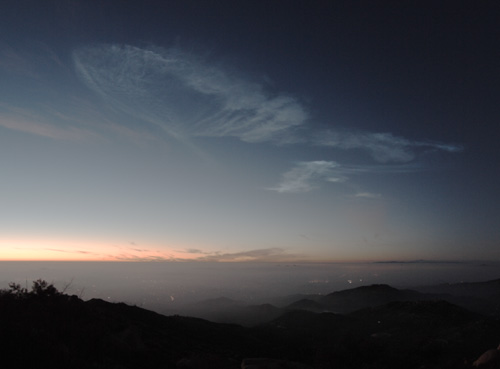
On October 14th, 2002, the Missile Defense Agency launched a Minuteman II as part of a test of the new "Ground-Based Midcourse Defense". There were thick clouds overhead so I didn't think I would get to see anything of the launch, but I was wrong - the contrail was lit by sunlight and was spectacular. So spectacular that I got excited and bumped the camera, ruining the image of the missile going up! The missile launched from lower right and headed towards the upper left. The blue cloud is from the missile.
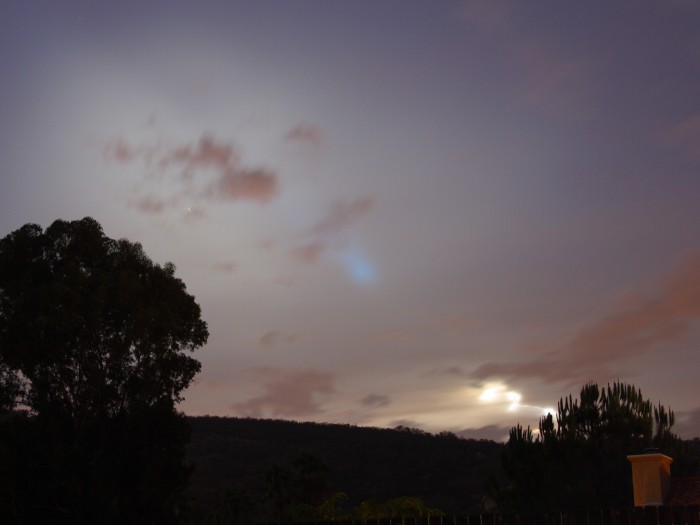
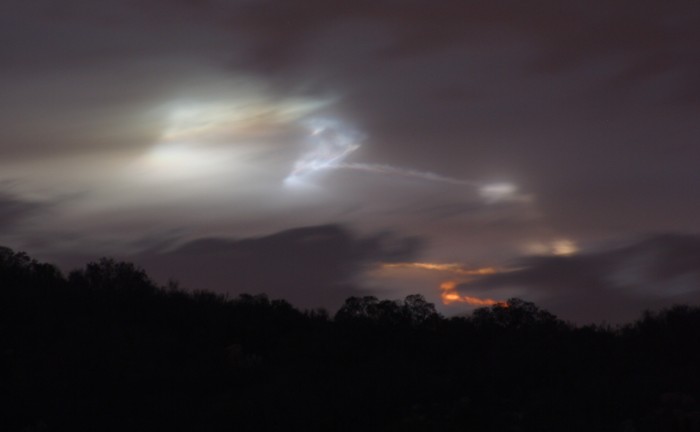
On July 14, 2001 a ballistic missile defense test was conducted. As part of this test, an MSLS missile was launched from Vandenberg Air Force Base. From near my house in Ramona, California (250 miles from the launch site) I was able to briefly see the rocket as it moved above the Sun during the first stage. About half an hour after launch the contrail became visible and became more mangled and twisted as time went on. I was not able to see the explosion when the dummy warhead was destroyed. The photo below was taken at 8:30pm (50 minutes after launch), and is a 1/6 second exposure at F2.5 with the equivalent of a 102mm lens.
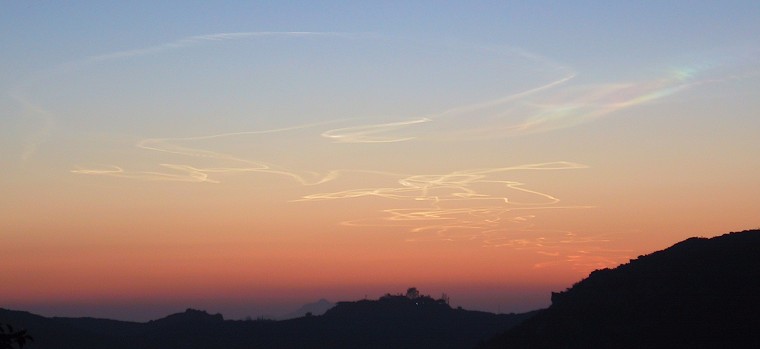
Almost half an hour later, at 8:55pm (T+75 minutes), the contrails had spread out much more and greatly increased in color. The unenhanced photo below exactly matches the way it looked visually. During the early parts of the launch, I listened to the Vandenberg Launch Net on my scanner, and I want to thank all of those hams who passed along information and sightings. This is a two second exposure at F2.5 with the equivalent of a 102mm lens.
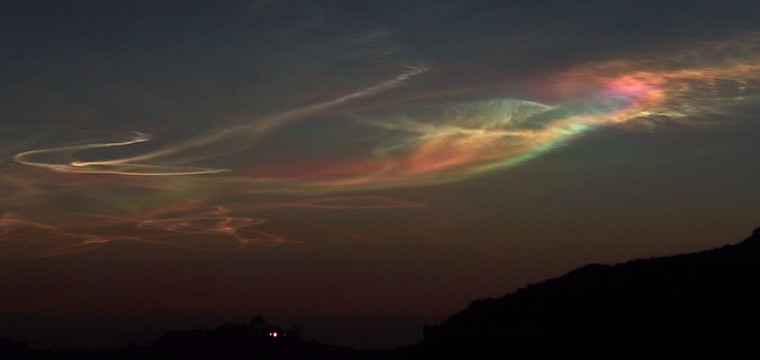
Not all launches are as spectacular as that. Daytime launches in particular are pretty disappointing. On October 5, 2001 a top secret spy satellite was launched atop the mightiest rocket that can be launched from Vandenberg: the Titan IV. You would think that big rocket means big show, but because it was afternoon and I was looking into the Sun, the launch was barely visible (left or top photo). Only after significant digital processing was the solid rocket motor exhaust trail visible (right or bottom photo, the white trail from lower right to upper left). The original unprocessed picture matches the view to the naked eye.
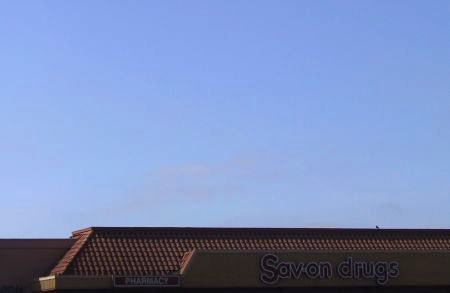

| This is a conventional photograph I took of a Minuteman II ICBM launch from Vandenberg Air Force Base on June 23, 1997. Notice how the rocket's exahust plume has been mangled and twisted by the high altitude winds. The streaks of light at the very bottom of the picture were caused by cars that drove by while the camera's shutter was open. A press release issued by Vandenberg AFB describing this launch is here. |
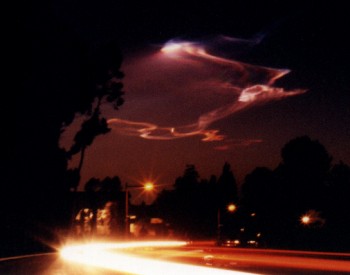
|
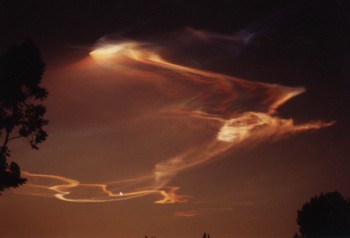
| A closer view of the same launch. The planet Venus can be seen as a bright star at the lower part of the photo, next to one of the exhaust plumes. |
| This photo is of a Delta II rocket launch from Vandenberg on September 26, 1997 that carried another batch of IRIDIUM satellites into orbit. |
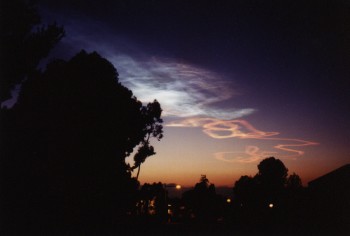
|
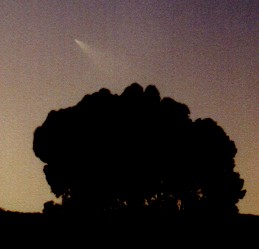
| This photo is of a small Pegasus rocket carrying the SWAS satellite into orbit on December 5, 1998. |
| Later, the exhaust plume expanded to a much larger size. This was not one of the more spectacular launches I have seen, probably because the Pegasus is a very small rocket, and since the launch occured too soon after sunset. If launched later, there would have been a more colorful display. |
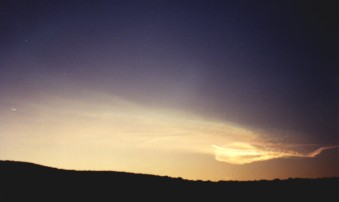
|
Why don't you check out my Eclipses & Transits page now?
Or, you can go back to my main astronomy page for lots more good images!
Comments? Questions? Click here to send email to me, Fred Bruenjes.
All text and images are © 1997-2001 Manfred Bruenjes - All Rights Reserved. Image inlining is strictly prohibited. Email for permission before using an image or text.